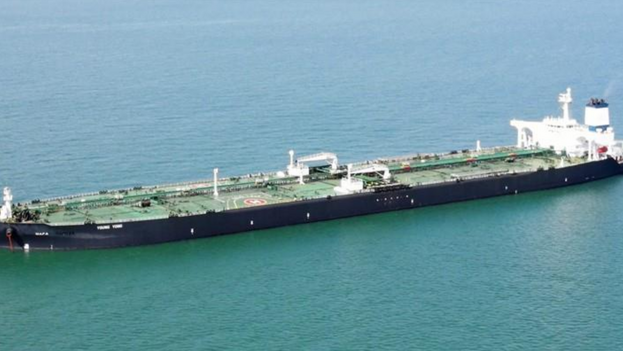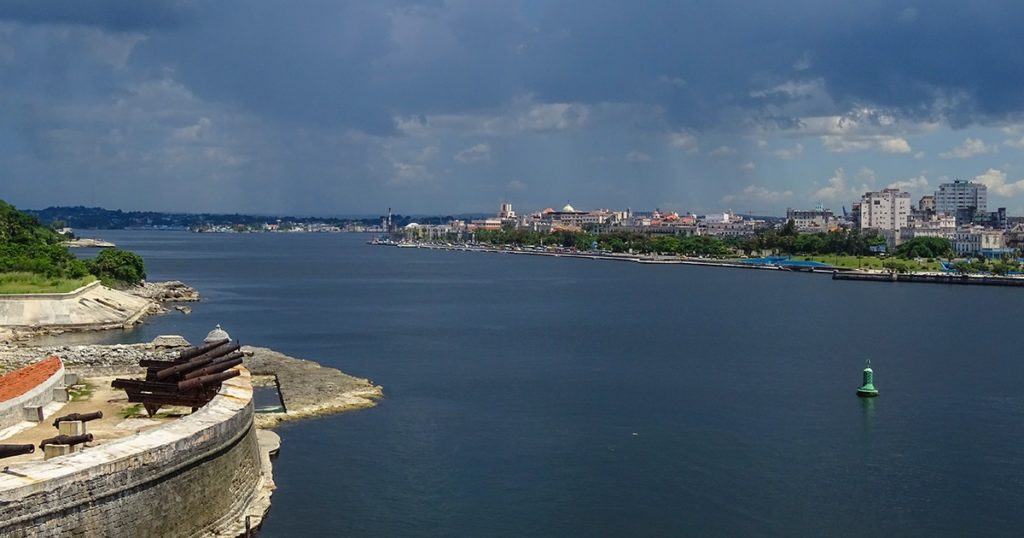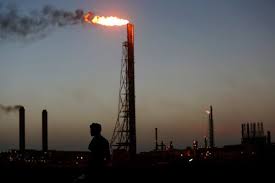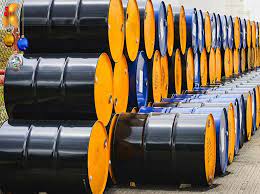PONEN AL DESCUBIERTO VENEZUELA USA NOMBRES Y DOCUMENTACION FALSA PARA ELUDIR SANCIONES DE EEUU. PHOTOS.
Más de 200 petroleros dan servicio a Irán y Caracas, pese a las sanciones de EE UU. Según el medio, el resto fueron envíos directos a Cuba y destinos del Caribe o Europa exentos del embargo.
UNA INVESTIGACIÓN publicada por la agencia británica Reuters concluye que Venezuela ha exportado más de 360 millones de barriles de crudo y combustible gracias a todo tipo de artimañas –incluido el uso de documentación y nombres falsos o transferencias de carga en alta mar– para eludir las sanciones de EE UU.
La cantidad representa más de dos tercios del total de las exportaciones realizadas por el país desde 2019, cuando se impusieron las medidas del Tesoro de EE UU, a octubre de 2022. Según el medio, el resto fueron envíos directos a Cuba y destinos del Caribe o Europa exentos del embargo.
Christian M. Ingerslev, director ejecutivo de Maersk Tankers, dijo a la agencia británica que hay más de 200 petroleros dando servicio a Irán y Venezuela, a pesar de las sanciones, incluidos unos 82 superpetroleros como el Young Yong, que pueden transportar hasta dos millones de barriles cada uno.
Hay más de 200 petroleros dando servicio a Irán y Venezuela, a pesar de las sanciones, incluidos unos 82 superpetroleros como el Young Yong, que pueden transportar hasta dos millones de barriles cada uno
Reuters publicó la pasada semana un extenso reportaje con la exclusiva, según la cual han detectado al menos tres barcos con documentos alterados. El epicentro de la investigación es el supertanquero Young Yong, que salió en septiembre de 2021 con papeles que certificaban el transporte de crudo de Malasia. Sin embargo, las imágenes de seguimiento satelital dan prueba de que el barco chino había cargado petróleo en Venezuela cuatro meses antes.
El Young Yong es uno de los tres barcos que Reuters pudo comprobar que participan en estas farsas. Esa identidad esconde, según la investigación, al Comuna, una nave que cargó 1,98 millones de barriles de petróleo en el puerto venezolano de José en mayo de 2021.
El tanquero fue pintado pero tiene unos arcos blancos flanqueando su puente que permiten identificarlo, así como la posición de las grúas en la cubierta y la forma del embudo, afirman desde TankerTrackers.com –que toma fotos satelitales– a Reuters. Además, cuando el Young Yong zarpó de Venezuela después de cargar el petróleo, su transmisor de ubicación mostró que partía del puerto de Lomé, en África Occidental.
El barco se detuvo cerca de Malasia entre julio y agosto de 2021. El día 8 de julio, concretamente, obtuvo un certificado de calidad del laboratorio Saybolt –con sede en Singapur– que identificó su carga como crudo pesado de Malasia (muy parecido al crudo Merey 16 de Venezuela). Este centro afirma a Reuters que se basó en la documentación entregada, así como su análisis, y que no tenía por qué dudar del cliente.
SUPERTANQUEROS ENVUELTOS EN EL CONTRABANDO DE PETROLEO…
El ‘Young Yong’, junto con uno de los otros dos tanqueros, han sido sancionados este noviembre por EE UU por violar el embargo contra Irán. Aparentemente, el supertanquero formaba parte de una red de contrabando que usaba documentos falsos para enviar petróleo con el que financiar la milicia libanesa pro iraní Hezbolá y la Guardia Revolucionaria. El barco es un activo congelado y su propietaria, la naviera Technology Bright, registrada en las Islas Marshall, está también sancionada. A su vez, la empresa está domiciliada en la dirección de East Wind Ship Management, una supuesta empresa con sede en Hong Kong que ha sido imposible de localizar por el corresponsal de Reuters en la provincia.
Aparentemente, el supertanquero formaba parte de una red de contrabando que usaba documentos falsos para enviar petróleo con el que financiar la milicia libanesa pro iraní Hezbolá y la Guardia Revolucionaria
La agencia de prensa comprobó también la documentación del fletador de Comuna (nombre del Young Yong para cargar en Venezuela), supuestamente Yunshu Maritime Ltd, que tampoco tiene contacto, dirección o lugar en que ubicarlo. Lo que sí se conoce es que también fletó otro supercarguero, el Joy, que transportó petróleo venezolano en mayo de 2021 bajo bandera panameña y nombre Adisa. Este es el segundo de los que entraron en la lista negra del Tesoro por transportar crudo de Irán.
Adisa está, supuestamente, controlado por un ucraniano, Viktor Artemov, que dirige una red implicada en el transporte de petróleo cuyos beneficios van también a la Guardia Revolucionaria y Hezbolá.
La empresa propietaria es Triton Navigation Corp, domiciliado en la misma dirección que Thomarose Global Ventures, con sede en Nigeria, pero también ilocalizable. El Adisa alteró su ubicación para que se considerase que cubría una ruta entre África y Malasia, pero en verano, en fecha que no se ha determinado, mantuvo el transpondedor apagado por una semana y apareció repentinamente en Qingdao (China) a mediados de septiembre, donde descargó. Su crudo pesado aparecía en el certificado como procedente de África Occidental.
Reuters tiene hasta 11 fuentes que confirman que estas prácticas se están generalizando para eludir las sanciones estadounidenses, que han aumentado en los últimos años.
“Queda claro que no se puede confiar en los certificados de origen, incluso cuando vienen con documentación oficial del Gobierno”
“Queda claro que no se puede confiar en los certificados de origen, incluso cuando vienen con documentación oficial del Gobierno”, dijo Cari Stinebower, socia en EE UU de un bufete de abogados especializado en asesorar a las petroleras para que cumplan con estas prohibiciones.
La especialista añadió que Irán fue pionero en estas técnicas que, al parecer, Venezuela lleva una temporada copiando.
Ingerslev, de Maersk Tankers, expuso a Reuters que el aumento de las sanciones está generando flotas y mercados paralelos, además de operaciones con los transpondedores apagados y situaciones que generan inseguridad. En marzo de 2020 un cubano falleció en una presunta operación de este tipo, nunca confirmada por las autoridades. Reuters dijo entonces que era al menos el segundo fallecido de la Isla en un intercambio petrolero con Venezuela.
UNCOVERED VENEZUELA USES FALSE NAMES AND DOCUMENTATION TO EVADE U.S. SANCTIONS. PHOTOS.
More than 200 oil tankers serve Iran and Caracas, despite US sanctions. According to the outlet, the rest were direct shipments to Cuba and destinations in the Caribbean or Europe that are exempt from the embargo.
AN INVESTIGATION published by the British agency Reuters concludes that Venezuela has exported more than 360 million barrels of crude oil and fuel thanks to all kinds of tricks – including the use of false documentation and names or cargo transfers on the high seas – to evade sanctions from the USA
The amount represents more than two-thirds of the total exports made by the country since 2019, when the US Treasury measures were imposed, to October 2022. According to the outlet, the rests were direct shipments to Cuba and Caribbean destinations. or Europe exempt from the embargo.
Christian M. Ingerslev, chief executive of Maersk Tankers, told the British agency that there are more than 200 tankers serving Iran and Venezuela, despite sanctions, including some 82 supertankers such as the Young Yong, which can carry up to two million. of barrels each.
There are more than 200 tankers serving Iran and Venezuela, despite sanctions, including some 82 supertankers like the Young Yong, which can carry up to two million barrels each.
Reuters published an extensive report last week with the exclusive, according to which they have detected at least three ships with altered documents. The epicenter of the investigation is the Young Yong supertanker, which left in September 2021 with papers certifying the transportation of crude oil from Malaysia. However, satellite tracking images provide proof that the Chinese ship had loaded oil in Venezuela four months earlier.
The Young Yong is one of three ships that Reuters was able to verify were involved in these hoaxes. That identity hides, according to the investigation, the Comuna, a ship that loaded 1.98 million barrels of oil in the Venezuelan port of José in May 2021.
The tanker was painted but it has some white arches flanking its bridge that allow it to be identified, as well as the position of the cranes on the deck and the shape of the funnel, TankerTrackers.com – which takes satellite photos – told Reuters. Furthermore, when Young Yong left Venezuela after loading the oil, her location transmitter showed that she was leaving the port of Lomé, West Africa.
The ship stopped near Malaysia between July and August 2021. On July 8, specifically, it obtained a quality certificate from the Singapore-based Saybolt laboratory, which identified its cargo as Malaysian heavy crude (very similar to Malaysian crude). Merey 16 from Venezuela). This center affirms to Reuters that it was based on the documentation provided, as well as its analysis and that it had no reason to doubt the client.
SUPERTANKERS INVOLVED IN OIL SMUGGLING…
The ‘Young Yong’, along with one of the other two tankers, have been sanctioned this November by the US for violating the embargo against Iran. The supertanker was apparently part of a smuggling ring that used false documents to ship oil to finance the pro-Iranian Lebanese militia Hezbollah and the Revolutionary Guard. The ship is a frozen asset and the owner of it, the shipping company Technology Bright, registered in the Marshall Islands, is also sanctioned. In turn, the company is domiciled at the address of East Wind Ship Management, an alleged company based in Hong Kong that has been impossible to locate by the Reuters correspondent in the province.
The supertanker was apparently part of a smuggling ring that used false documents to ship oil to finance the pro-Iranian Lebanese militia Hezbollah and the Revolutionary Guard.
The press agency also verified the documentation of the Comuna charterer (name of the Young Yong to load in Venezuela), supposedly Yunshu Maritime Ltd, who also has no contact, address or place to locate him. What is known is that she also chartered another supercargo, the Joy, which transported Venezuelan oil in May 2021 under the Panamanian flag and name Adisa. This is the second of those to be blacklisted by the Treasury for transporting crude oil from Iran.
Adisa is allegedly controlled by a Ukrainian, Viktor Artemov, who runs a network involved in transporting oil whose profits also go to the Revolutionary Guard and Hezbollah.
The company that owns it is Triton Navigation Corp, domiciled at the same address as Thomarose Global Ventures, based in Nigeria, but also untraceable. The Adisa altered its location so that it was considered to be covering a route between Africa and Malaysia, but in the summer, on an undetermined date, it kept the transponder turned off for a week and suddenly appeared in Qingdao (China) in mid-September, where you downloaded Her heavy crude was listed on the certificate as coming from West Africa.
Reuters has as many as 11 sources confirming that these practices are becoming widespread to circumvent US sanctions, which have increased in recent years.
“It is clear that certificates of origin cannot be trusted, even when they come with official government documentation”
“It’s clear that certificates of origin cannot be trusted, even when they come with official government documentation,” said Cari Stinebower, a US partner at a law firm specializing in advising oil companies to comply with these prohibitions.
The specialist added that Iran was a pioneer in these techniques that, apparently, Venezuela has been copying for a while.
Ingerslev, of Maersk Tankers, explained to Reuters that the increase in sanctions is generating fleets and parallel markets, as well as operations with transponders turned off and situations that generate insecurity. In March 2020, a Cuban died in an alleged operation of this type, never confirmed by the authorities. Reuters said then that he was at least the second death on the island in an oil exchange with Venezuela.
Agencies/ 14yMedio/ Reuters/ USOilEmbargo/ Extractos/ Excerpts/ Internet Photos/ Arnoldo Varona/ www.TheCubanHistory.com
THE CUBAN HISTORY, HOLLYWOOD.



 UNCOVERED Venezuela Uses False names and Documentation to Evade U.S. Sanctions. PHOTOS. * PONEN al Descubierto VENEZUELA usa nombres y Documentación Falsa para Eludír Sanciones de los Estados Unidos. PHOTOS.
UNCOVERED Venezuela Uses False names and Documentation to Evade U.S. Sanctions. PHOTOS. * PONEN al Descubierto VENEZUELA usa nombres y Documentación Falsa para Eludír Sanciones de los Estados Unidos. PHOTOS.






